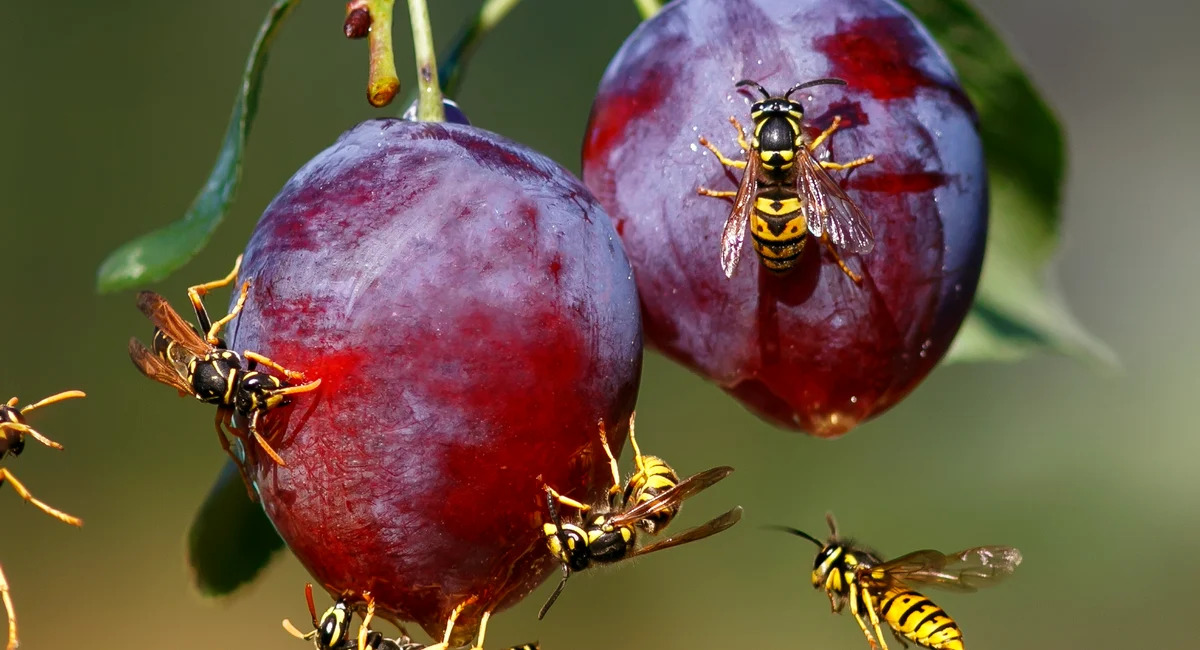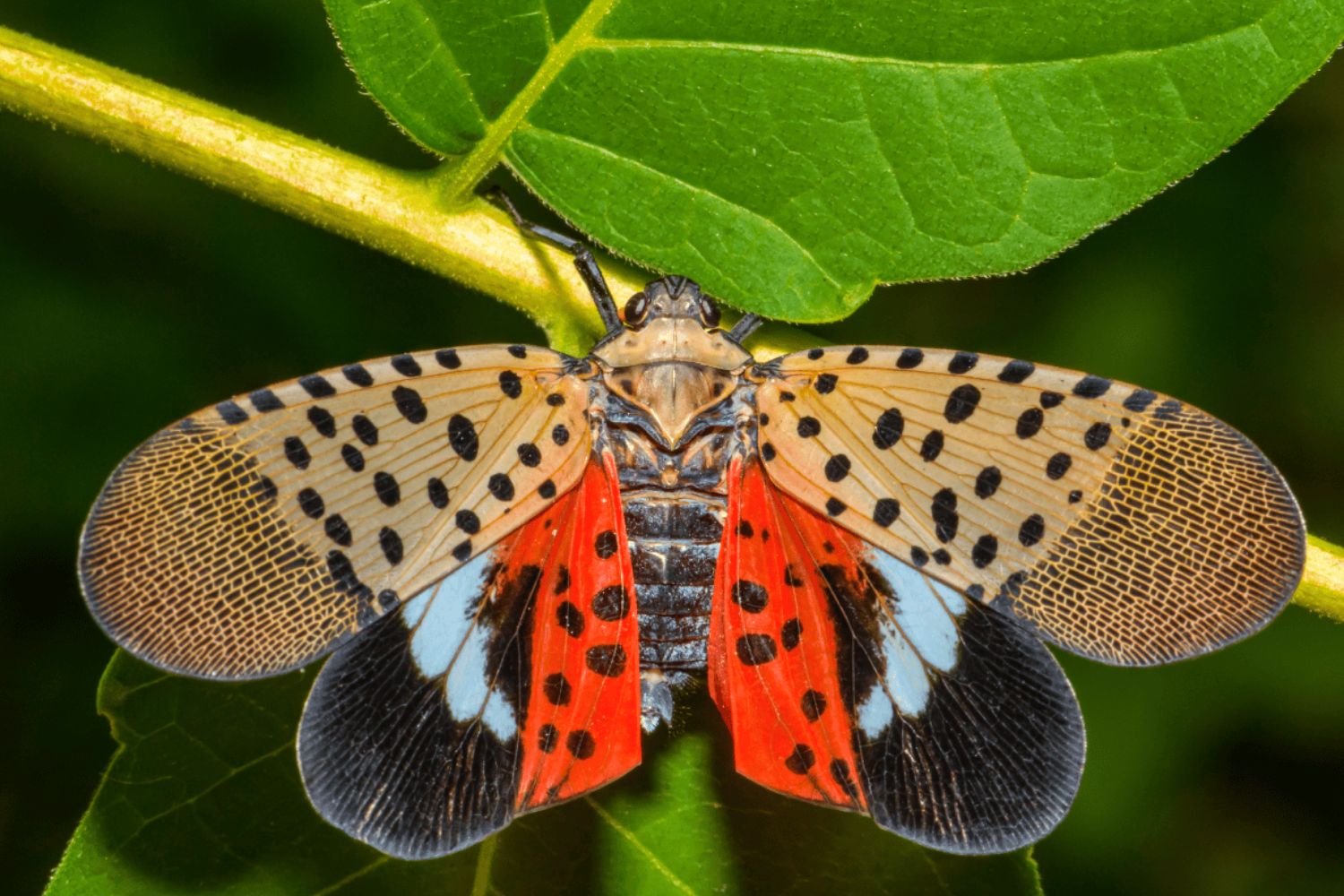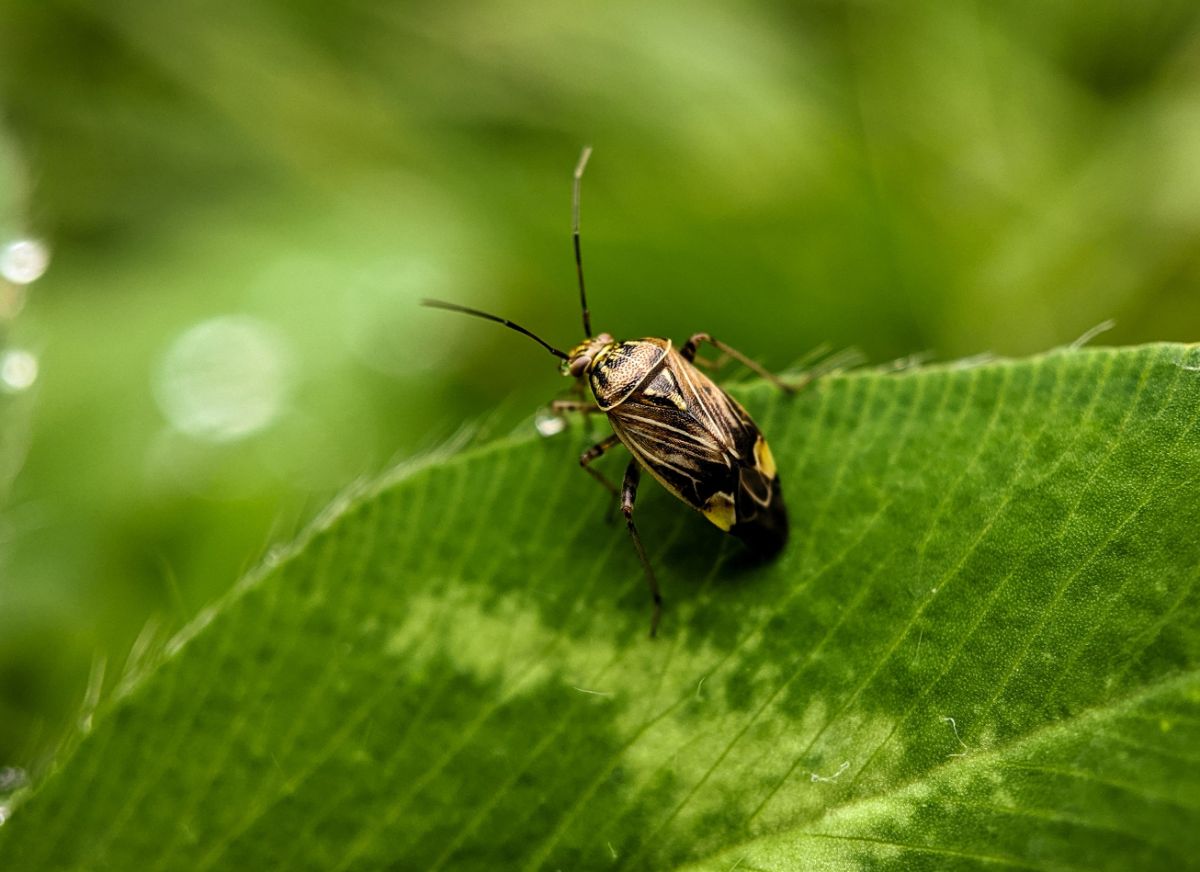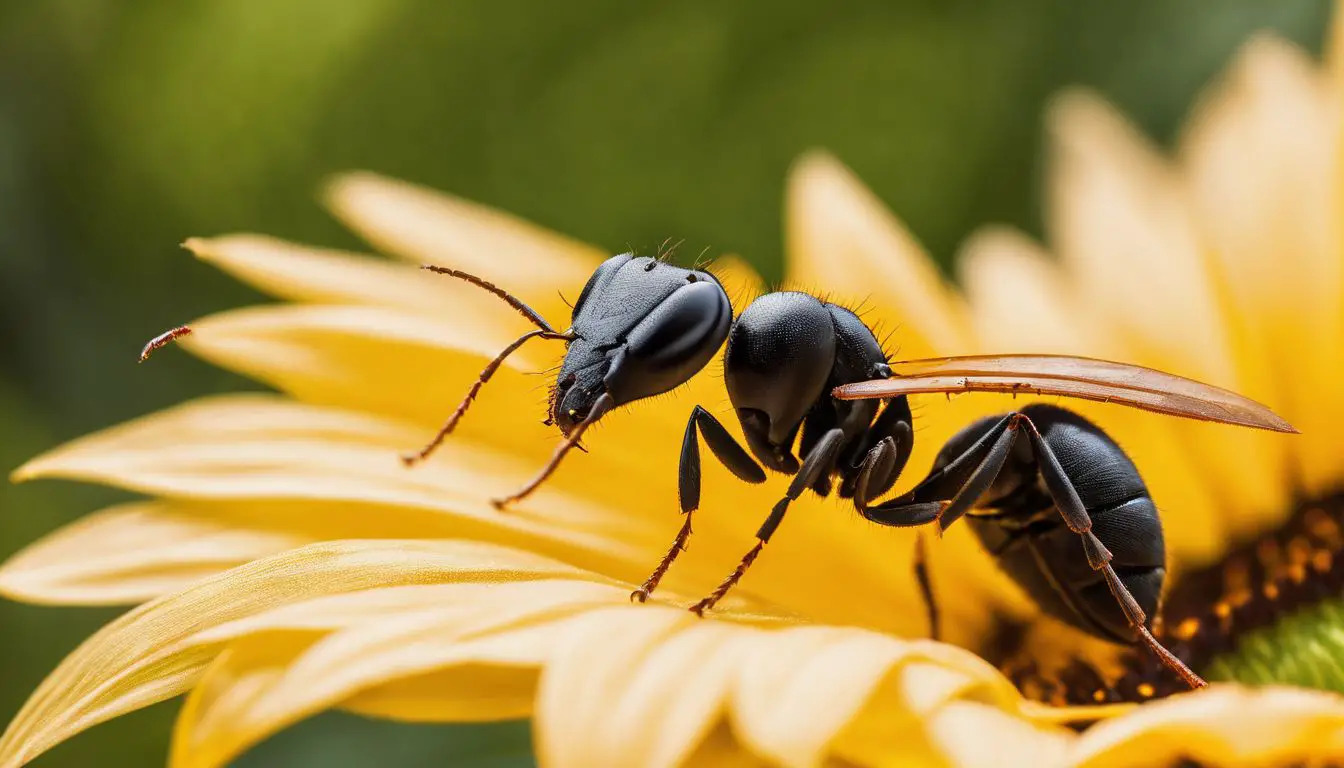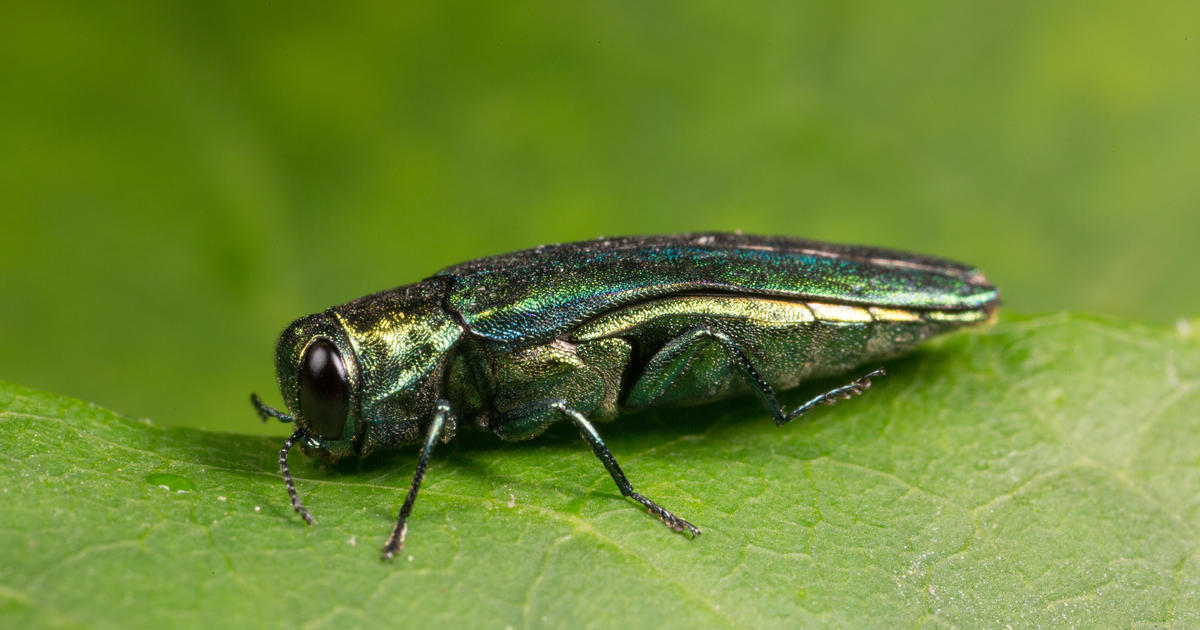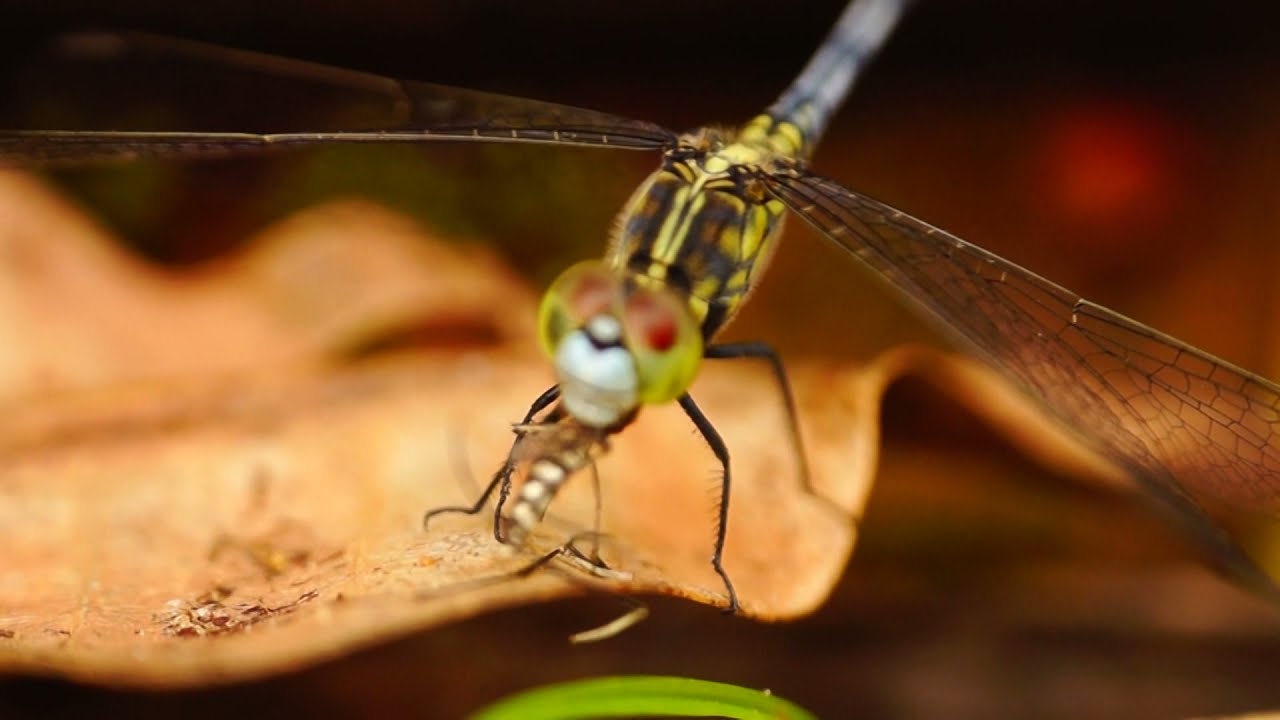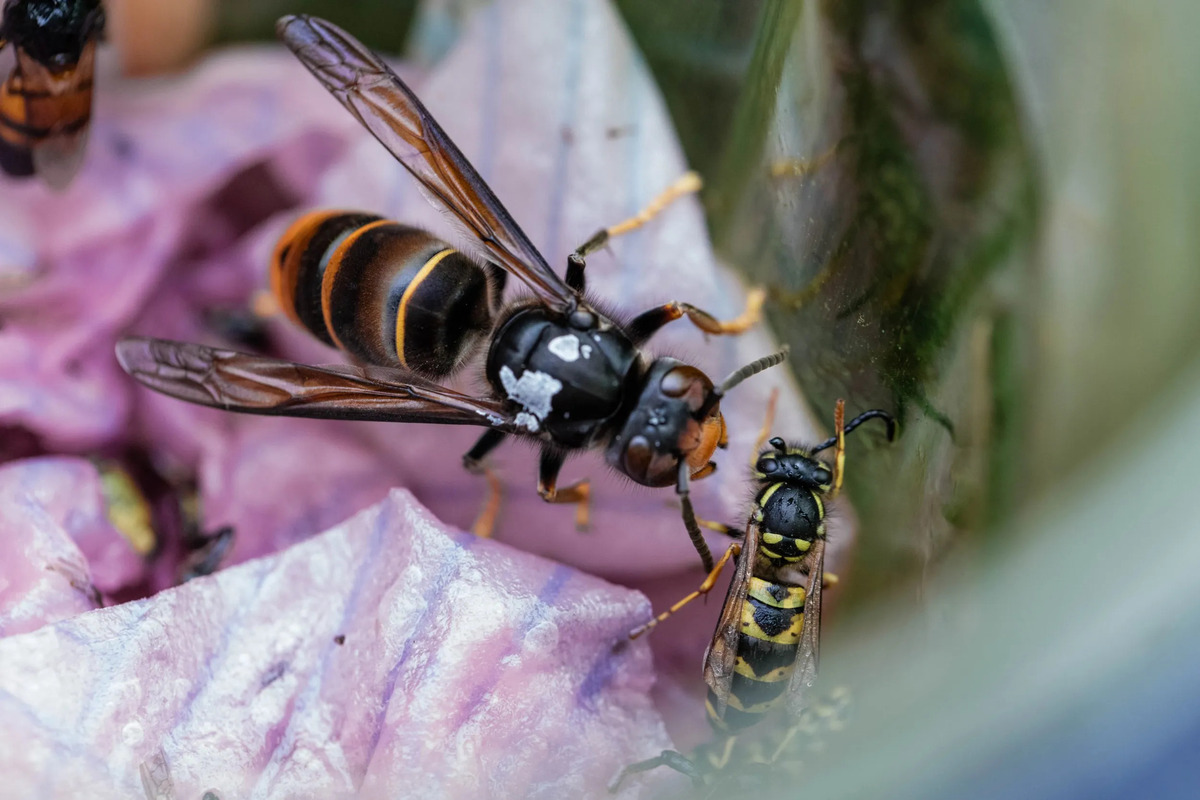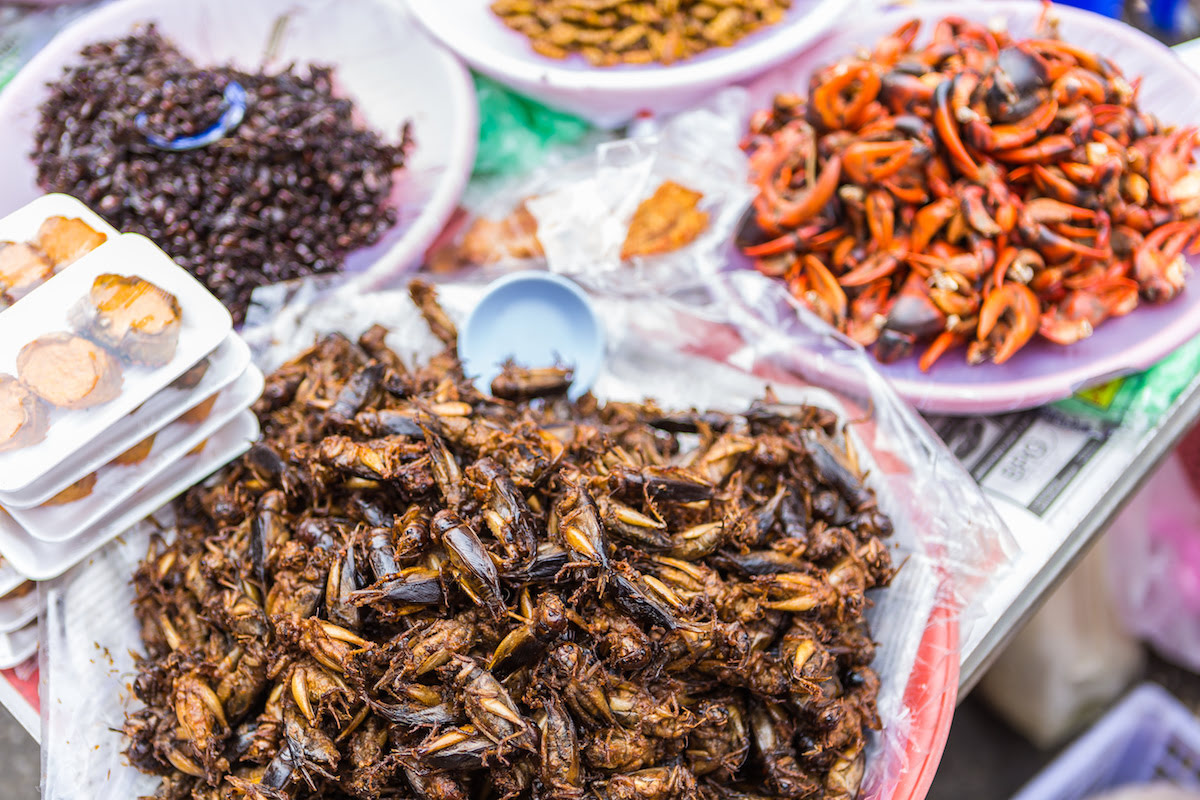Home>Gardening News and Trends>Latest News>What Is The Plant That Eats Insects


Latest News
What Is The Plant That Eats Insects
Modified: January 22, 2024
Discover the latest news on the intriguing plant that eats insects. Learn more about this unique botanical species and its fascinating behavior.
(Many of the links in this article redirect to a specific reviewed product. Your purchase of these products through affiliate links helps to generate commission for Chicagolandgardening.com, at no extra cost. Learn more)
Table of Contents
- Introduction
- Carnivorous Plants: An Overview
- The Venus Flytrap: A Famous Insect-Eating Plant
- The Pitcher Plant: A Pouch That Traps Prey
- The Sundew Plant: Sticky Tentacles for Capturing Insects
- The Bladderwort Plant: Vacuum Traps for Aquatic Insects
- The Butterwort Plant: A Sticky Solution for Caught Insects
- How Carnivorous Plants Obtain Nutrients from Insects
- The Role of Carnivorous Plants in the Ecosystem
- Conservation of Carnivorous Plants
- Conclusion
Introduction
Carnivorous plants are a fascinating and diverse group of flora that have captured the imagination of scientists and nature enthusiasts alike. These extraordinary plants have evolved to survive in environments where the nutrient content in the soil is low, such as bogs and wetlands. To compensate for this lack of nutrients, they have developed unique adaptations that allow them to trap and digest insects and other small prey.
Feeding on insects might seem like an unusual characteristic for a plant, as we typically associate plants with photosynthesis and obtaining nutrients from the sun and soil. However, carnivorous plants have found an alternative way to supplement their diet by turning to animal prey.
There are several different types of carnivorous plants, each with its own unique trapping mechanism and method of digesting prey. Some of the most well-known carnivorous plants include the Venus flytrap, pitcher plant, sundew plant, bladderwort plant, and butterwort plant. Each of these plants has its own specialized structures and strategies for capturing and consuming insects.
In this article, we will explore the intriguing world of carnivorous plants, delving into the characteristics and behaviors of these remarkable organisms. We will examine the various types of carnivorous plants and the fascinating mechanisms they use to catch and digest their prey. Additionally, we will discuss the vital role that carnivorous plants play in the ecosystem and the efforts being made to conserve these unique and endangered species.
Carnivorous Plants: An Overview
Carnivorous plants are a group of plants that have evolved to capture, kill, and digest small animals, primarily insects. They have developed various adaptations to enable them to survive in environments where the soil lacks essential nutrients.
One key characteristic of carnivorous plants is their ability to attract and trap insects. They have evolved unique structures and mechanisms that serve this purpose. Some carnivorous plants, like the Venus flytrap, have specialized leaves that snap shut when triggered by the movement of an insect. Others, such as pitcher plants, have modified leaves that form a tubular shape, filled with a liquid that drowns and digests trapped organisms.
Another notable adaptation of carnivorous plants is the secretion of digestive enzymes. Once an insect is trapped, the plants release enzymes that break down the prey’s tissues into smaller, more manageable forms. This enables the plants to extract the vital nutrients, including nitrogen and phosphorus, which are scarce in their natural habitats.
It’s worth noting that not all carnivorous plants are solely reliant on insects for their nutrition. Some species, like the bladderwort plant, are aquatic and capture tiny aquatic organisms using suction-like traps. Additionally, some carnivorous plants have been known to capture small vertebrates, such as frogs or mice, although these occurrences are rare.
Carnivorous plants can be found in various habitats worldwide, with the majority inhabiting wetlands, bogs, and other nutrient-poor environments. They have adapted to these conditions by evolving specific mechanisms that allow them to supplement their nutrient intake. This unique ability sets carnivorous plants apart from their non-carnivorous counterparts and has captivated the interest of botanists, ecologists, and nature enthusiasts for centuries.
In the following sections, we will delve into some of the most well-known and fascinating carnivorous plant species, exploring their unique characteristics, trapping mechanisms, and the role they play in the ecosystem.
The Venus Flytrap: A Famous Insect-Eating Plant
The Venus flytrap (Dionaea muscipula) is perhaps the most iconic and well-known carnivorous plant. Native to the southeastern United States, this fascinating plant has unique leaf structures that resemble a trap, designed to capture and digest insects.
The leaves of the Venus flytrap are divided into two primary regions: the leaf base and the leaf blade. The leaf blade contains specialized trigger hairs on its inner surface. When these trigger hairs are touched or stimulated by an insect, it triggers a rapid closure of the trap.
Once the trap is triggered, it closes shut within a fraction of a second, effectively trapping the insect inside. The trapping mechanism is so swift that it can capture even fast-moving prey like flies or ants. The trapped insect is then subjected to an impressive display of physiological processes.
After the trap has closed, the Venus flytrap starts to secrete digestive enzymes into the enclosed space. These enzymes break down the insect’s tissues, transforming them into a nutrient-rich soup that the plant can absorb. The digestion process typically lasts around one to two weeks, after which the trap reopens, ready for the next prey.
The Venus flytrap’s ability to differentiate between live prey and non-prey stimuli is noteworthy. It only responds to the movement of an organism that triggers at least two trigger hairs within a certain time frame. This mechanism is crucial for the plant’s survival as it ensures that the trap does not waste energy closing for non-nutritive objects like raindrops or debris.
While the Venus flytrap primarily feeds on insects, it can also occasionally capture small spiders or other arachnids. However, it is important to note that the Venus flytrap does not rely solely on insect prey for its survival. It derives the majority of its energy and nutrients through photosynthesis, utilizing the sunlight it receives to convert carbon dioxide and water into glucose.
The Venus flytrap’s unique characteristics and stunning trapping mechanism have made it a popular plant among botany enthusiasts worldwide. Despite being a carnivorous plant, it has also gained attention for its peculiar beauty, with its mouth-like traps and vibrant green color drawing admiration from both scientists and nature lovers alike.
The Pitcher Plant: A Pouch That Traps Prey
The pitcher plant is another captivating example of a carnivorous plant that has evolved a unique strategy for trapping and digesting small animals. There are several species of pitcher plants, all of which share a distinct characteristic: their modified leaves form a hollow, pitcher-shaped structure that serves as a deadly trap for unsuspecting prey.
The pitcher plant’s leaves are specialized into two distinct regions: the pitcher tube and the lid or operculum. The pitcher tube is the elongated, tubular section that leads to a pool of digestive fluid at the bottom. The lid or operculum acts as a cover for the pitcher, preventing rainwater from diluting the digestive fluid and also providing a means of entry for prey.
The surfaces of the pitcher plant’s leaves are often slippery and waxy, making it difficult for insects to escape once they have fallen inside. Some pitcher plants even have downward-pointing hairs that further impede prey from climbing out of the trap.
At the base of the pitcher tube, the plant secretes a liquid composed of digestive enzymes and acidic compounds. This fluid aids in breaking down the soft tissues of the trapped prey, primarily insects and other small arthropods. The pitcher plant then absorbs the nutrients released from the digestion process through small openings in its leaf surface.
It’s important to note that some species of pitcher plants have evolved additional mechanisms to enhance their prey capture. For example, the Nepenthes species, commonly found in Southeast Asia, have been observed to produce sweet-smelling nectar that lures insects towards the opening of the pitcher. Once the insects enter the trap to feed on the nectar, they become trapped and eventually drown in the fluid.
The pitcher plant’s ability to lure, trap, and digest prey has allowed it to adapt and thrive in nutrient-poor environments. These plants are often found in wetlands, bogs, and other habitats where competition for resources is high. By supplementing their nutrient intake through carnivory, pitcher plants have gained a competitive advantage in these challenging ecosystems.
The pitcher plant’s remarkable trapping mechanism and its ability to acquire nutrients from its prey continue to fascinate researchers and nature enthusiasts worldwide. Understanding the intricate adaptations of these plants not only sheds light on the complexities of the natural world but also brings to attention the need to preserve and protect these extraordinary species.
The Sundew Plant: Sticky Tentacles for Capturing Insects
The Sundew plant, belonging to the genus Drosera, is a carnivorous plant renowned for its unique trapping mechanism. Unlike other carnivorous plants that use elaborate structures or traps, the Sundew plant relies on tiny, sticky tentacles to capture and digest insects.
The leaves of the Sundew plant are covered in glands that secrete a sticky substance. These glands form a captivating arrangement of droplets that serve as irresistible traps for unsuspecting insects. When insects land on the leaf, they become entangled in the sticky secretion, unable to escape the plant’s grasp.
Once captured, the Sundew plant begins its gruesome work of digestion. The glands on the leaf surface start to secrete digestive enzymes onto the trapped insect. These enzymes break down the insect’s body, turning it into a nutrient-rich liquid that the plant can absorb.
The Sundew plant is not only armed with sticky tentacles but also exhibits remarkable movement in response to its prey. When an insect becomes trapped, the tentacles surrounding it begin to curl inwards, bringing more of the sticky glands into contact with the prey. This movement ensures maximum contact and efficient digestion of the captured insect.
Interestingly, the Sundew plant’s adhesive secretions also have a role in attracting prey. The sticky droplets glisten, resembling water or nectar, which unsuspecting insects perceive as a potential food source. This clever deception lures insects to land on the leaf, only to be ensnared by the plant’s sticky embrace.
While the Sundew plant primarily preys on small insects like flies, gnats, and mosquitoes, some species have been known to capture larger insects as well. In rare instances, the Sundew plant has been observed to catch and consume small beetles or butterflies that happen to land on its leaves.
The Sundew plant’s ability to lure, capture, and digest insects through its intricate sticky tentacles is a fascinating adaptation that has allowed it to thrive in nutrient-poor environments. These plants are often found in wetlands, bogs, and other areas with acidic soil, where competition for nutrients is high.
Studying the Sundew plant not only offers valuable insights into the diverse strategies plants employ for survival but also highlights the incredible intricacies of the natural world. These captivating plants serve as a reminder of the astounding adaptability and beauty that can be found in even the most challenging environments.
The Bladderwort Plant: Vacuum Traps for Aquatic Insects
The Bladderwort plant, belonging to the genus Utricularia, is a unique carnivorous plant that has adapted to aquatic environments. Unlike other carnivorous plants that rely on sticky substances or mechanical traps, the Bladderwort plant has evolved specialized structures called bladders to capture and consume small aquatic insects.
Bladderworts are found in various aquatic habitats, including freshwater lakes, ponds, and marshes. They have finely divided leaves that float in the water, with thread-like structures that extend into the water, forming a network of bladder-like structures.
These bladders are incredibly efficient traps. They are under negative pressure, meaning that the internal pressure is lower than the surrounding water. The bladders have a small opening and are equipped with tiny trigger hairs, which, when touched by a prey organism, cause the rapid opening of the bladder.
The sudden opening of the bladder creates a vacuum effect, sucking in water along with any unsuspecting insect that happened to brush against the trigger hairs. The prey is sucked into the bladder in a split second, effectively entrapped within the fluid-filled cavity.
Once inside the bladder, the captured insect is gradually digested. The plant secretes enzymes and other digestive fluids into the bladder, breaking down the soft tissues of the prey. This allows the Bladderwort plant to absorb the nutrients it needs from the dissolved prey.
Bladderwort plants are remarkably efficient in their trapping ability, with some species capable of capturing dozens of insects within a single day. This exceptional adaptation allows them to thrive in nutrient-poor aquatic environments, where they supplement their diet by feeding on small prey organisms.
It is worth noting that not all Bladderwort species exclusively rely on aquatic insects. Some species have also been observed to capture small crustaceans, tadpoles, and even small fish in their bladders. These plants have adapted to accommodate a wider prey range, further emphasizing their versatility and adaptability in different aquatic ecosystems.
Studying the Bladderwort plant provides valuable insights into the fascinating ways in which plants have evolved to adapt to their environments. These unique plants serve as a reminder of the remarkable biodiversity found in our world’s water bodies, and the intricate relationships between organisms that exist within aquatic ecosystems.
The Butterwort Plant: A Sticky Solution for Caught Insects
The Butterwort plant, belonging to the genus Pinguicula, is a carnivorous plant known for its adhesive leaves that enable it to capture and digest insects. These plants can be found in a variety of habitats, including moist meadows, bogs, and rocky slopes.
The leaves of the Butterwort plant are covered in tiny, glandular hairs that secrete a sticky substance known as mucilage. This sticky layer on the leaf surface is their primary trapping mechanism, luring and ensnaring small insects.
When an insect comes into contact with the sticky surface of the Butterwort’s leaves, it becomes trapped in the mucilage. The sticky hairs effectively immobilize the insect, preventing it from escaping. This unique adaptation ensures that the plant can catch prey efficiently.
Once caught, the Butterwort plant begins the process of digestion. The glandular hairs on the leaf surface secrete enzymes that break down the insect’s body, converting it into a nutrient-rich solution that can be absorbed by the plant.
Unlike some other carnivorous plants, the Butterwort plant does not possess elaborate traps or complex mechanisms for capturing prey. Instead, it relies entirely on the adhesive properties of its leaves. This simple yet effective strategy allows the plant to supplement its nutrient intake, particularly in habitats where the availability of nutrients is limited.
It’s worth noting that the Butterwort plant primarily targets small insects, such as flies, gnats, and midges. Larger insects are less likely to become ensnared by the plant’s adhesive leaves. The prey capture rate of Butterworts is influenced by factors such as temperature, humidity, and insect abundance in their habitats.
In addition to its carnivorous nature, the Butterwort plant also possesses beautiful, colorful flowers that attract pollinators, such as bees and butterflies. This dual functionality of attracting insects both as prey and pollinators makes the Butterwort a fascinating and essential component of the ecosystem.
The Butterwort plant’s ability to trap and derive nutrients from insects demonstrates the incredible adaptability of plants in diverse environments. By studying these carnivorous plants, we gain insights into the intricate strategies that plants employ to survive in nutrient-poor conditions, showcasing the remarkable diversity and complexity of the natural world.
How Carnivorous Plants Obtain Nutrients from Insects
Carnivorous plants have evolved unique adaptations to obtain nutrients from the insects they capture. These plants have developed specialized structures and mechanisms that allow them to break down and digest their prey, extracting essential nutrients that are otherwise scarce in their surrounding environments.
One common method that carnivorous plants use to obtain nutrients from insects is through the secretion of digestive enzymes. When an insect becomes trapped or comes into contact with the plant’s trapping mechanism, the carnivorous plant releases digestive enzymes onto the captured prey. These enzymes break down the insect’s proteins, carbohydrates, and other organic compounds into smaller, more easily absorbable molecules.
Once the insect’s tissues are broken down, the carnivorous plant absorbs the resulting nutrient-rich liquid through specialized structures. These structures, such as glandular cells or absorbent hairs, line the surfaces of the trapping organs or leaves, allowing the plant to extract and transport the nutrients for its own growth and survival.
Some carnivorous plants have evolved specific adaptations to increase nutrient absorption efficiency. For example, some plants have developed complex trap structures that prevent the captured prey from escaping and ensure maximum exposure to the digestive enzymes. These structures may include sticky surfaces, suction-like traps, or rapid closure mechanisms that prevent prey from escaping.
Additionally, carnivorous plants have also adapted to be selective in their prey capture. They are often triggered to close or secrete digestive enzymes only in response to specific stimuli, such as the size or movement of the captured prey. This selectivity allows the plants to conserve energy and avoid expending resources on non-nutritive or unsuitable prey items.
It is important to note that while carnivorous plants derive some of their nutrients from insects or small animals, they still rely on photosynthesis as their primary source of energy. Through photosynthesis, plants convert sunlight, carbon dioxide, and water into glucose, which provides the energy required for growth and development. The nutrients obtained from insects serve as supplementary sources of essential elements like nitrogen, phosphorus, and potassium.
The ability of carnivorous plants to obtain nutrients from insects is a remarkable example of adaptation and evolution. These plants have developed sophisticated mechanisms to thrive in nutrient-poor environments and utilize alternative food sources to supplement their nutrition. Studying these unique plants not only sheds light on the diversity of life on Earth but also offers insights into the incredible strategies that organisms employ to survive and thrive in challenging conditions.
The Role of Carnivorous Plants in the Ecosystem
Carnivorous plants play a crucial role in the ecosystem, contributing to the balance and functioning of their respective habitats. Despite their relatively low abundance compared to non-carnivorous plants, their unique characteristics and interactions with other organisms have significant ecological implications.
One important role of carnivorous plants is their contribution to nutrient cycling. In nutrient-poor environments, these plants capture and digest insects, absorbing essential nutrients that would otherwise be limited. By recycling these nutrients, carnivorous plants help maintain nutrient balance and availability in their ecosystems.
Additionally, carnivorous plants serve as regulators of insect populations. Insects form a significant portion of a carnivorous plant’s prey. By actively hunting and capturing insects, these plants help regulate the populations of insects, preventing outbreaks or imbalances that could have detrimental effects on other organisms in the ecosystem.
Carnivorous plants also provide niche habitats for a wide variety of microorganisms. The acidic and enzymatic-rich environments within their traps create unique conditions that support specialized bacteria and other microscopic organisms. These microorganisms play important roles in aiding the digestion process, breaking down prey and contributing to nutrient recycling within the plant’s ecosystem.
Furthermore, carnivorous plants can indirectly support other species by providing additional resources. Insects that are captured and consumed by these plants can inadvertently attract other organisms, such as predators or parasitoids, which rely on insects as their own food source. This creates a chain of interactions within the ecosystem, fostering biodiversity and supporting the surrounding food web.
It is worth noting that some carnivorous plants have also developed mutualistic relationships with organisms such as ants. These ants are attracted to the nectar or extrafloral nectaries produced by the plants and, in return, protect the plant from herbivores or potential threats. This mutualism benefits both the plant and the ants, further illustrating the intricate interactions and interdependencies within ecosystems.
Overall, carnivorous plants play an integral role in nutrient cycling, insect population regulation, and providing unique microhabitats within their ecosystems. Their presence contributes to the overall ecological balance and biodiversity, highlighting the intricate interconnectedness of organisms in nature.
Conservation of Carnivorous Plants
Carnivorous plants face numerous threats in their natural habitats, including habitat loss, pollution, climate change, and overcollection. As a result, many carnivorous plant species have become endangered or extinct in the wild. It is essential to prioritize the conservation of these unique and ecologically valuable plants to ensure their survival and safeguard the delicate balance of their ecosystems.
One critical aspect of carnivorous plant conservation is the protection and preservation of their habitats. Carnivorous plants are often found in specialized environments such as bogs, wetlands, and other areas with specific soil and moisture conditions. The destruction or alteration of these habitats can have severe consequences for the survival of these plants. Efforts should be made to protect and restore these habitats, including the establishment of protected areas and the implementation of sustainable land-use practices.
Public awareness and education are also essential for the conservation of carnivorous plants. Many people are unaware of the existence and ecological importance of these unique plants. By raising awareness and promoting education about carnivorous plants, we can foster an appreciation for their conservation and support efforts to protect their habitats.
In addition to habitat conservation, measures should be taken to prevent the overcollection of carnivorous plants from the wild. The demand for carnivorous plants in horticulture and the illegal trade pose significant threats to wild populations. The cultivation of carnivorous plants in nurseries and promoting the use of responsibly sourced plants can help reduce the pressure on wild populations and ensure the sustainability of these species.
Collaborative research and monitoring efforts are crucial for understanding the ecology, distribution, and population dynamics of carnivorous plants. This knowledge is fundamental for developing effective conservation strategies and assessing the success of conservation initiatives. Furthermore, genetic analyses can help identify genetic diversity and aid in the establishment of ex-situ conservation programs such as seed banks or living collections.
International legislation and policies play a vital role in protecting carnivorous plants. The inclusion of these plants in national and international conservation frameworks, such as the Convention on International Trade in Endangered Species of Wild Fauna and Flora (CITES), can help regulate their trade and ensure their sustainable management.
Overall, the conservation of carnivorous plants requires a collaborative and holistic approach, involving governments, conservation organizations, scientists, and the public. By prioritizing habitat protection, raising awareness, preventing overcollection, promoting sustainable cultivation, conducting research, and implementing effective policies, we can work towards ensuring the long-term survival of these extraordinary and ecologically important plants.
Conclusion
Carnivorous plants are marvels of evolutionary adaptation, astonishing us with their unique strategies for capturing and digesting insects. These remarkable plants have developed specialized structures and mechanisms, such as sticky tentacles, vacuum traps, and pouch-like structures, to obtain nutrients that are scarce in their environments.
While these plants are relatively few in number compared to non-carnivorous plants, they play significant roles in the ecosystem. They contribute to nutrient cycling, regulate insect populations, provide microhabitats for specialized organisms, and even form mutualistic relationships with other species.
However, carnivorous plants face numerous threats due to habitat loss, pollution, climate change, and overcollection. Conservation efforts are crucial to ensure the survival of these unique plants and protect the delicate ecosystems they inhabit.
Conservation of carnivorous plants involves protecting and preserving their habitats, raising awareness, preventing overcollection, conducting research and monitoring, and implementing effective policies. By prioritizing these efforts, we can work towards securing the future of carnivorous plants and maintaining the biodiversity and ecological balance they contribute to.
By studying and appreciating these extraordinary plants, we gain insights into the incredible adaptations and diversity of life on Earth. Carnivorous plants serve as a testament to the resilience and ingenuity of nature, captivating our imagination and reminding us of the intricate and interconnected web of life that we are a part of.
